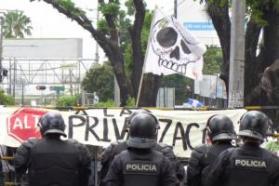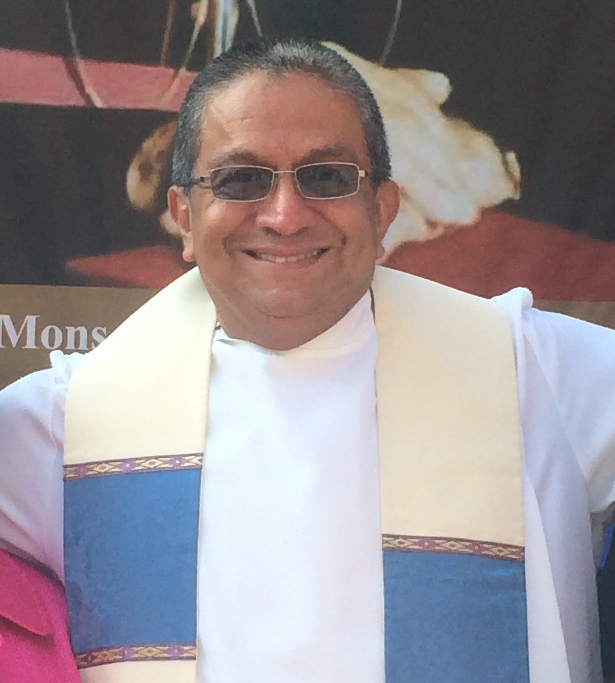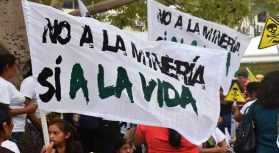Elections Update: TSE announces electoral calendar, warns of Supreme Court interference
On October 4th, the Supreme Electoral Tribunal (TSE) officially announced that elections will be held on March 4, 2018 for Legislative Deputies, Mayors and Municipal Councils. The outcome of these elections will bear heavily on the ability of the left-wing Sánchez Cerén administration to carry out its platform in its remaining two years. The next Legislative Assembly will be tasked with electing a new Attorney General, who wields considerable influence in determining who faces prosecution and who doesn’t. For the past year, social movement organizations have been hammering current Attorney General Douglas Meléndez for leaving corruption charges against hundreds of former right-wing Nationalist Republican Alliance (ARENA) government officials to wither away as statutes of limitations expire.
The new legislature will also elect new Magistrates for the five-member Constitutional Chamber of the Supreme Court, which the Salvadoran social movement has widely criticized for its continuous attempts to destabilize the Farabundo Martí National Liberation Front (FMLN) government by undermining financial stability and illegally ousting government officials.US Embassy cables unearthed through Wikileaks reveal that the right-wing has long considered control of the Supreme Court as a ‘Plan B’ in the case of an FMLN presidential victory.
Since the 2009 election, when FMLN candidate Mauricio Funes, broke ARENA’s 20-year presidential hold, the Constitutional Chamber has made a number of decisions around and during elections that have profoundly altered the country’s electoral system, from allowing independent candidates for the Legislature to single-handedly re-shaping the makeup of the country’s highest electoral authority, Supreme Electoral Tribunal.The Constitutional Chamber’s repeated overreach into the Legislative Assembly’s terrain have many worried that the pillars of El Salvador’s democratic system are at risk.
Julio Olivo, the President of the TSE, strongly criticized the Chamber during his October 4th press conference, saying, “Since 2009 with the naming of the new Constitutional Chamber [of the Supreme Court], the Peace Accords have been changed in writing and spirit as a result of the judicial sentences issued by the Constitutional Chamber and under the reasoning of a government of judges.” The Supreme Electoral Tribunal (TSE) is one of the key institutions to emerge from the 1992 Peace Accords, which ended El Salvador´s brutal 12 year civil war. In an effort to ensure fair elections following the Civil War, the TSE was established as a pluralistic body to organize and oversee elections.The tribunal is made up of 5 magistrates, one proposed by each of the three political parties that fared best in the most recent election, and two proposed by the Supreme Court who are then elected by the Legislative Assembly.
The Constitutional Chamber has repeatedly trampled on the principle of multi-party control of the electoral process that is fundamental to the Peace Accords, having removed both left-wing magistrates from the Tribunal, issued a number of decisions that infringe on the ability of the TSE to guarantee electoral fairness, and prohibited poll workers from belonging to any political party.
As legislative and municipal elections approach in March, with presidential elections just over the horizon in 2019, President Olivo echoed the social movement’s concerns about the potential destabilization that the Supreme Court’s Constitutional Chamber might continue to foment.
With the memory still fresh of the disruptive role the Constitutional Chamber played during the most recent elections in 2015 Olivo, the President of the TSE, issued a stark warning. “A new system of voting has been imposed by judicial sentence outside of political consensus, the opinion of citizens, and the highest administrative and judicial electoral authority,” he said. “[On behalf of the TSE], I ask for respect, not just for our mandate, but for the integrity of the institution and the history of bloodshed, mourning, and pain of the people.”

 "I am a CISPES supporter because continuing to fight for social justice and a more people-centered country means continuing the dream and sacrifice of thousands of my fellow Salvadorans who died for that vision.” - Padre Carlos, New York City
"I am a CISPES supporter because continuing to fight for social justice and a more people-centered country means continuing the dream and sacrifice of thousands of my fellow Salvadorans who died for that vision.” - Padre Carlos, New York City

